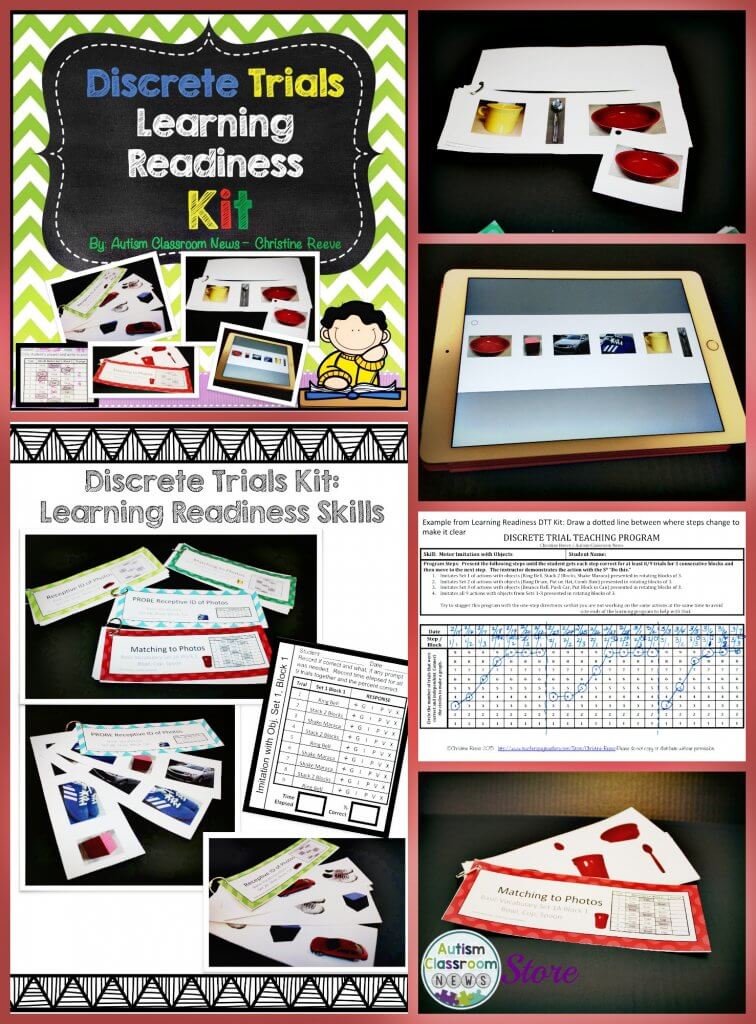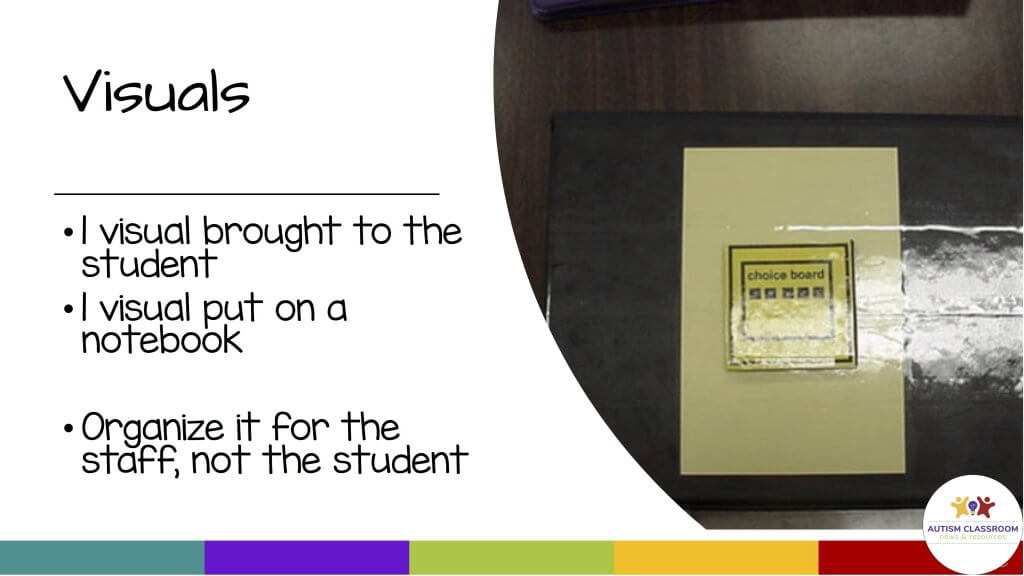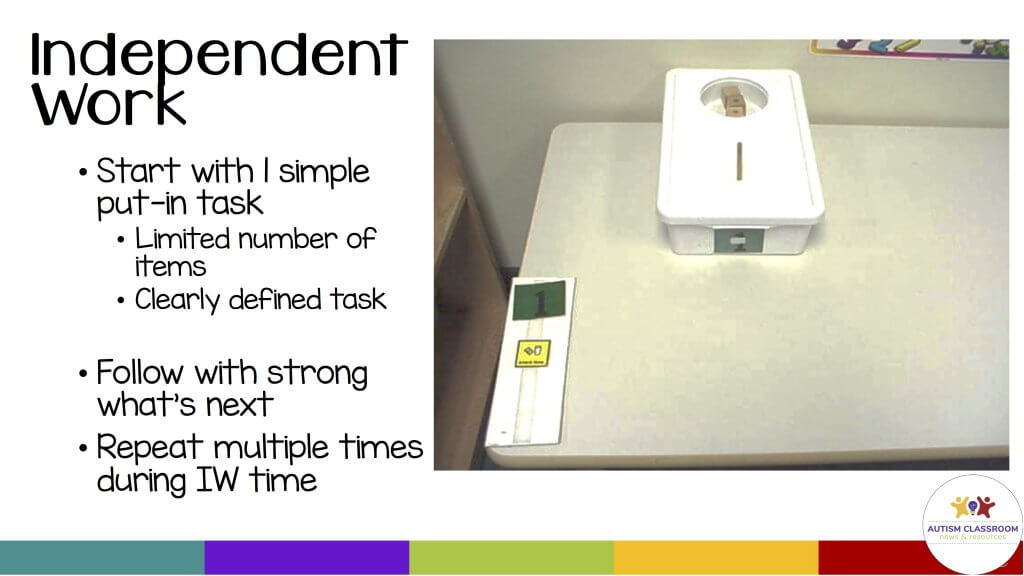Sharing is caring!

Readers frequently ask me how to teach beginning learners with autism. These are students who enter school without basic skills like following directions. And while they frequently have autism, they may often not have an ASD diagnosis. Typically those asking me this question are teachers newer to education. But many may have been teaching for a while and never encountered a student who doesn’t know how to follow directions and attend. These students are exceptionally challenging because of their lack of understanding of basic language skills. Consequently, often staff interpret their behavior to be noncompliance rather than the result of their skill deficits.
My goal in this post to give you a brief roadmap with pointers for some more information to get started thinking about a program for instruction for these students. I can’t equip you with all the skills you need for these students in a blog post (sorry 😞), but at least I can get you started. If you are looking for more in depth training and information, I highly recommend the Special Educator Academy where we have a whole workshop on this particular topic. And we also have lots of follow up tools and videos on how to implement the strategies discussed and more.
Who Are Beginning Learners With Autism?
Many beginning learners with autism (and without) are nonverbal or functionally nonverbal. Some students might enter school in preschool as beginning learners. But others are teenagers or high schoolers who come into the classroom without the needed skills to attend and learn. Many times, these students also have significant challenging behaviors that interfere with their learning. And most times their teachers, and parents, are challenged to figure out how to reach them to teach them the basic skills they need to learn.
In the field of autism. these students are typically considered Level 3 in the diagnostic criteria [scroll to page 6]. Students who are at level 3 are require very substantial support, per the DSM-5 criteria. They have significant deficits in communication and are often nonverbal. These students who limited appropriate interactions with others. And they typically demonstrate significant repetitive and stereotyped behaviors, like perseveration, that impact their functioning in the classroom and at home.

Where Do I Start with Beginning Learners?
Step 1: Building Relationships [Pair with Reinforcement]
The first step in starting instruction with any student, especially with beginning learners, is to build a relationship with them. But this is one of the areas that teachers often find most difficult with these students because of their lack of social engagement. These aren’t students who often climb into your lap or make regular, meaningful eye contact. So, the act of building a relationship with them means we have to find out what they like. And we have to build our relationships with them around that. In Applied Behavior Analysis (ABA) we refer to this as pairing ourselves with reinforcement [see #2].
In order to do this, the first thing we have to do is find out what is reinforcing to the student. So we need to do some investigating to figure that out. Reinforcement is essentially something that when it follows a behavior, that behavior increases. In layman’s terms it’s something that the student likes, but it is more technical than that. If he likes it, but the behavior doesn’t increase, it’s not a reinforcer.

So, it’s important to spend some time interacting with the student and trying to figure out what he gravitate to. For instance, if you left him alone in the room, what would he do? That might be something that you could join in to (if it’s not harmful obviously) to pair yourself with as a reinforcer. If you can make the item or activity better by being part of it that’s even better. For instance, you blow the bubbles, so you make them go. Find out more about reinforcement in this episode of the podcast.
Step 2: Teach Learning Readiness Skills
I will definitely be back with more about teaching beginning learners learning readiness skills. I can’t believe I haven’t written more about them in the past. Learning readiness skills, or basic learning skills, are the building blocks of learning. They teach students HOW to LEARN. For instance, if you can’t respond to teacher calling your name, you will miss the directions being given in a learning setting, even 1-1. If you don’t follow directions, you don’t practice new skills. Similarly, if you don’t imitate, you can’t learn from modeling what other people do. These are all basic learning skills that students need in order to attend to instruction.
Often these are skills that we think about teaching in early childhood classes. However, I’ve met many a high school student who didn’t have them. And I’ve met a number of older students who had skills like matching, naming items, and even reading who didn’t have these basic skills. Those more “advanced” skills they learned by rote almost on their own. But they weren’t learning new material because they lacked the learning readiness skills to learn from others.
Typically, we teach these skills using applied behavior analysis. Often we use discrete trials. However, we can also embed it into learning environments using incidental teaching or Pivotal Response Training (PRT). Some students do well with discrete trials and others do well with more naturalistic instruction. If you are looking for tools to teach these types of skills my Beginning Learner Discrete Trial Kit can help. And I’ll be back in the future to talk about some new tools and ways to teach these skills in the classroom.

Step 3: Teach Communication Skills to Beginning Learners
Since many of these students are nonverbal, this seems pretty obvious. But we must address functional communication for these students early and effectively. That means that if we need may need to consider an augmentative communication evaluation to determine the best method to start the student on communicating. In the meantime, though, we need to get the foundations of communication started while we wait. We can start doing that through communication temptations or other methods of working getting students to initiate. This episode of the podcast has steps to get you started.
You might also work on just some basic turn-taking with students while you are building the relationships from step #1. You could do something as simple as doing a put-in task where I put one in and he puts one in. And we go back and forth. That’s the basis for communication.

Finally, I often start by using the Picture Exchange Communication System (PECS) because it’s great at making communication concrete for these beginning learners. It’s important to know that PECS is about much more than the pictures. It’s about the process and the steps. In addition, check out this post for important elements of promoting communication within the classroom for beginning learners.
Step 4: Simple Visual Schedules for Beginning Learners With Autism
In thinking about visual supports, don’t assume that these learners will understand the visuals. We have to teach them what the visuals mean. They may not know how to match yet. So start small, but start. I will usually start with symbol-based schedules because they are the easiest to use and transfer and most students will learn them. I then adjust up and down as needed based on performance. You can read more about the different types of schedules and deciding about them in this post.

Also consider starting with 1 visual that you take to the student rather than presenting the whole day. This way they don’t have to discriminate the pictures or follow the order.
And make sure that you are having them check into the area with a landing pad or check in board/envelope to practice matching. This practices a skill and helps make schedules more concrete.
Step 5: Use Visual Structure to Engage Beginning Learners With Autism
These are the tools you will use to keep students engaged in task. And being engaged in tasks will reduce challenging behavior for all students, even new learners. Start by teaching simple put-in tasks that can go into structured work systems. Use Table Tasks to fill downtime and keep students engaged during transitions or any waiting times. The more that your students are busy and engaged with materials, the fewer challenging behaviors will occur. This is a fundamental piece of teaching.

In addition, teach the students to complete simple independent work systems with 1 task to start. You can start with put-in tasks with just a few pieces using hand-over-hand prompts. This post talks about how to get started with independent work. Beginning learners, particularly, need to structure and opportunities to learn to work on their own. They will spend a good amount of time each day with people instructing them. To avoid becoming dependent on that attention and instruction, independent work systems help to teach them to complete tasks on their own.
Step 6: Address Challenging Behaviors
Finally, I could write for days about this item. There are essentially two components to this effort. The first is to be proactive and teach the skills addressed above. Teaching students to engage themselves in tasks, to communicate effectively, and the learning readiness skills I noted above will all help to prevent challenging behaviors.
In addition, it’s important to recognize that for beginning learners with communication deficits, challenging behavior is directly related to skill deficits. Consequently it’s critical that we teach appropriate behavior rather than expect it. These students have not developed the typical milestone skills of other students you may be used to that provide the foundation for sitting, attending and following directions without negative behavior. Their skills are still at a level where behavior that is not age-appropriate (e.g., tantrums that might be more appropriate for a 2-year-old) is how they communicate that they need something. As educators, it’s our responsibility to teach them the skills they lack to replace those behaviors.

To start this means setting up strategies that reinforce appropriate behaviors and reduce reinforcement for inappropriate behaviors. We try to reduce downtime and boost engagement and other preventive strategies that you can read about in this post. For many of these students, however, we should also initiate a functional behavior assessment (FBA). And from that assessment, we should development a behavioral support plan to help determine specific replacement skills and strategies for preventing and responding to behavior.
Summary of the Roadmap for Beginning Learners with Autism
So, I know that’s a lot. They aren’t easy these students. However, watching the progress that they make when they have a teacher who understands how to reach them can be one of the most rewarding experiences in a career. The light that comes on in their face when they first understand communication is priceless. Realizing that you no longer have to reinforce him every time he sits when you tell him to is so rewarding (for you!).
The posts and podcast episodes I’ve linked to throughout this post can help give you more information. I really hope you will come try out the Special Educator Academy’s resources in this area too. We have a 7-day free trial and tons of resources designed specifically for beginning learners (among other special education students). And we have lots of educators in the SEA Faculty Lounge FB group for members in classrooms just like yours who can help as well.

Join Us!
Come get a free trial in the Special Educator Academy where we have workshops and study groups on them.


![Summer resources to help survive the end of the year in special education [picture-interactive books with summer themes]](https://autismclassroomresources.com/wp-content/uploads/2018/05/SUMMER-RESOURCES-ROUNDUP-FEATURE-8528-768x768.jpg)





